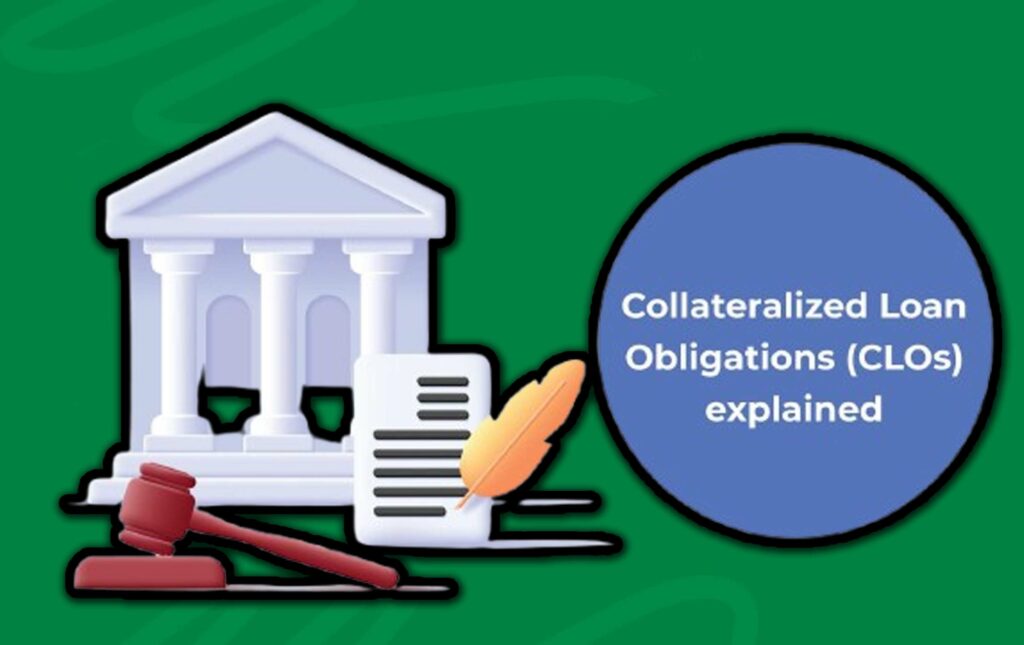Collateralized Loan Obligation – This financial product has surfaced to be a complicated but captivating instrument in the world of finance. Apart from this, collateralized loan obligations have substantial influence and effect within the world of structured finance as well. When talking about debt markets and securitization, collateralized loan obligations always come up as an asset class that has gained attention and study, especially after the 2008 financial crisis.

However, what are collateralized loan obligations all about? How does it work? Do not worry because everything you need to know about the intricacies of collateralized loan obligations will be mentioned in this guide.
What is Collateralized Loan Obligation?
A collateralized loan obligation is also known as a CLO and is an advanced financial instrument that brings the multiple range of portfolios of corporate bonds and loans together. Thus, the pooled assets will now be split into various tranches with different levels of return and risk.
Moreover, the securities will be provided depending on the tranches. Then, the securities are purchased by investors. Meanwhile, the collateral of the securities is the cash flows from the underlying loans.
How Does It Work?
The concept behind CLOs is easy to understand. Firstly, they gather different corporate loans and divide them into separate risk-based tranches. However, the issuing of securities is based on the tranches, which are sold to investors at the end. Lastly, according to their priorities, the cash flows from the primary loans are then given out to the tranches.
CLO Structure
The collateralized loan obligation is made up of different debt tranches, and these are ranked based on the creditworthiness of the primary loan. Here is the structure of a CLO:
- AAA Tranche.
- AA Tranche.
- A Tranche.
- BBB Tranche.
- BB Tranche.
- Equity Tranche.
The equity tranche is the lowest tier as it represents the ownership of the primary collateral.
Pros and Cons
Make sure you compare the pros and cons of a collateralized loan obligation before proceeding with anything:
Pros:
- High yields.
- Diversification.
- Routine transaction.
- Income generation.
- Profits from defaults.
- Risk management.
- Potential for active management.
- Credit enhancement.
- Market liquidity.
- Seniority.
Cons:
- Risk manager.
- Interest rate.
- Risk complexity.
- Credit risk.
- Market fluctuation.
- Liquidity risk.
- Reinvestment risk.
- Defaults and losses.
- Structural risk.
- Legal and official risks.
Factors to Consider
Before considering a CLO, there are certain factors that you need to carefully consider. They include the following:
- Tranche structure.
- Overall portfolio objectives.
- Credit quality of underlying loans.
- Portfolio diversification.
- Yield and return expectations.
- Market conditions.
- Collateralized loan obligation manager track record.
- Legal and regulatory environment.
- Exit strategies.
- Fees and expenses.
When you juxtapose these factors, you will know if a CLO is a suitable option for you and your financial goals.
How to Create a Collateralized Loan Obligation
Here are the steps you can follow if you would like to create a collateralized loan obligation:
Structuring
The first step to creating a collateralized loan obligation (CLO) is structuring. Find out the structure of the CLO, the types of loans it entails, the tranching strategy, and the targeted returns to investors.
Choose a portfolio.
Gather a wide range of portfolios of corporate bonds or loans to meet the eligibility criteria set by the collateralized loan obligation structure.
Legal Documentation
Create legal documents stating the terms and conditions of the collateralized loan obligation, as well as the investors, CLO manager, and the rights and obligations of the issuer.
Get approval from the rating agency.
Receive approval from a rating agency to get credit ratings for various tranches of the collateralized loan obligation securities based on the credit quality of the primary portfolio.
Market and Distribute
Sell the collateralized loan obligation securities to possible investors and institutional investors like insurance companies, pension funds, and hedge funds.
Closing
After the investor interest has been obtained, you can finish the collateralized loan obligation securities issuance and transfer of funds.
Finishing Up
Continue to manage the CLO portfolio and keep track of the performance of the primary loans. Disperse cash flows to potential investors, and make the right investment decisions based on the terms of the structure.
Frequently Asked Questions (FAQs)
Are CLOs impacted by changes in interest rates?
Certainly, collateralized loan obligations can be affected by changes in the interest rate. Increasing interest rates might make the borrowing costs for corporations increase. This will also affect their ability to pay back loans and affect the performance of CLO securities.
What is the typical duration of CLO investments?
The duration of a CLO investment can differ based on multiple factors like the structure of the collateralized loan securities and the maturity profile of the primary loans. Nonetheless, the terms of CLO investments are generally medium to long.
Can individual investors access CLO investments?
Yes, individual investors can access collateralized loan investments through specific investment channels like exchange-traded funds or mutual funds. This is quite similar to insurance companies and pension funds that institutional investors use.



